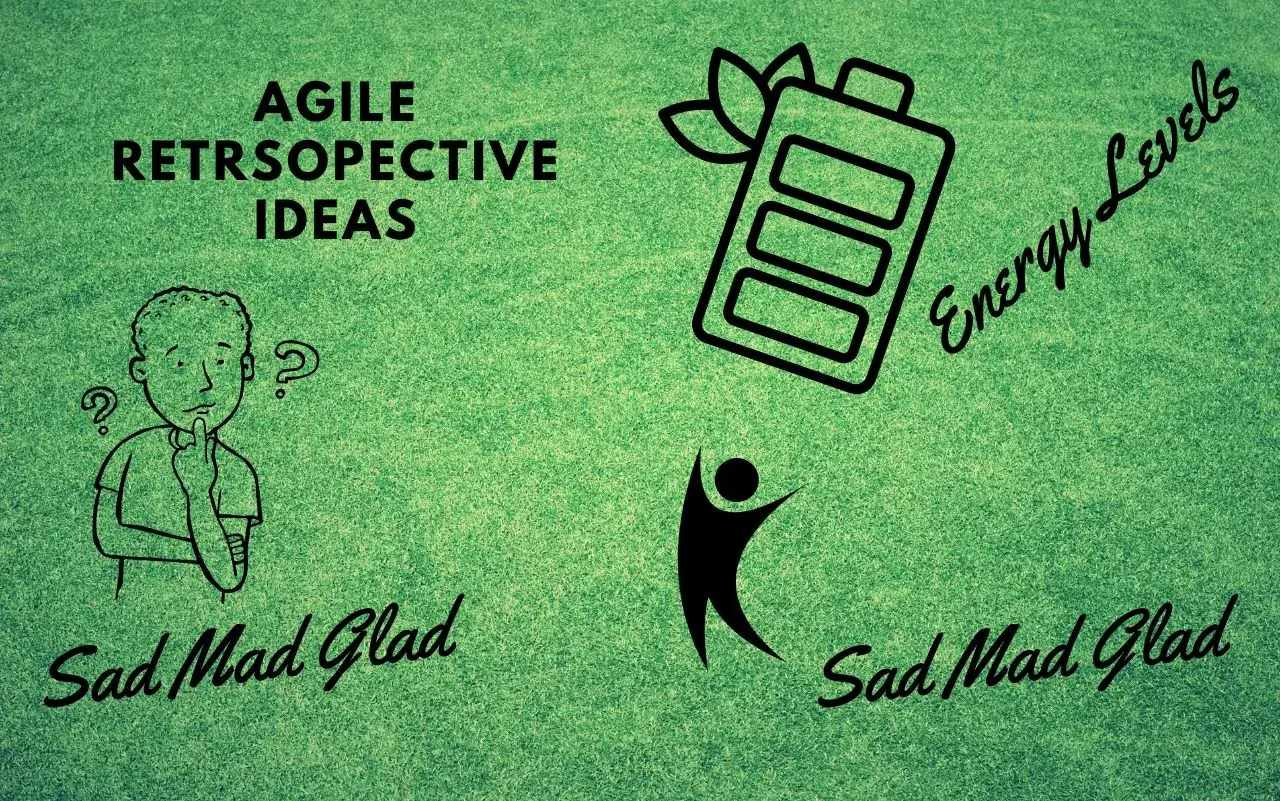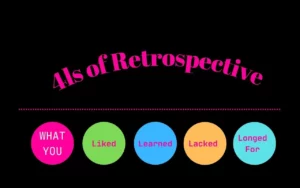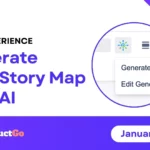Retrospectives are an important part of agile software development, but they don’t always have to be complicated or time-consuming. You can focus on just one simple element, such as the actions of each team member throughout the last iteration. Also, you can focus on something more substantial and deep-dive into an issue affecting your team’s progress to discover possible solutions that will help get things back on track. Whatever approach you choose, these five agile retrospective ideas will help make your team’s meetings more productive.
Table of Contents
What is a Retrospective?
Retrospectives are an important part of agile methodologies. They allow teams to learn from their past successes and failures and improve the way they work in the future.
Agile retrospectives are relatively short, usually lasting around 30 minutes. They’re held at regular intervals throughout the project and allow members of the team to discuss what’s working well and what isn’t on the project. The purpose is to improve communication and collaboration between team members so they can work more efficiently together in the future.

What are the Benefits of Agile Retrospective Ideas?
The benefits of Agile retrospective ideas include:
- You get feedback from your team members about their experience with their work.
- You learn how your team members communicate with each other, which can help you improve your communication skills or make sure they’re working effectively together.
- Also, it helps you to see if there are any problems or challenges that you have not been aware of.
- You can get feedback from stakeholders about how projects went, which can help you improve future projects or ensure that things go smoothly.
- Learning from others’ experiences can help you in future projects.
- Additionally, the team can use the information collected to improve their processes, systems, and tools.
- They can help teams identify key issues and risks early in the project lifecycle.
4 Agile Retrospective Ideas for Remote Teams
Here are some agile retrospective ideas for remote development teams:
Energy Levels
This is one of the most common fun retrospective ideas. A common problem with retrospectives is that people don’t feel involved enough. A simple way to address this is to start with a recap of where things stand at the beginning of the retrospective. Later on, just keep track of how things change as it progresses.
For example, you have two different teams working on the same project. One of them has been working consistently for several months and another is onboard for approximately a week now. You could ask each team to write down their current level of energy. Finally, compare notes at the end of the meeting and discuss how other teams might be able to learn from their experiences.
What Went Well?
Another way to encourage more involvement is through an open-ended question like “What went well today?” In this way, people think about what they did well instead of what they could have done better. The goal is to make people feel good about their accomplishments, which will help them stay motivated even when they’re facing challenges in their work.
The Mad Sad Glad Retrospective
It’s among the most unique agile retrospective ideas. The Mad Sad Glad retrospective is a great way to wrap up your team’s retrospectives and share what they’ve learned. This is a simple format; you can use it with any team or project.
You start by having everyone share their “mad” experiences from the past week. Then they share their “sad” stories, which are usually things that went wrong but had no impact on the current status of the project or team. Finally, they share their “glad” stories, which are things that went right during the week.
Liked, Learned, Lacked, Longed For (4Ls)
The 4 L’s are a great way to summarize the key takeaways from a retrospective technique. They encourage you to think about what you liked, what you learned, what you lacked in your process, and what you wished was different. The idea is that if there were things that could be improved upon, those are the ones you should consider next time around.
1. Liked
Share the things you liked about the project. This is an opportunity to reflect on your project’s work and what didn’t.
- What did you like about it?
- What did you dislike?
- Do you have any suggestions for improvement?
2. Learned
Share the experience you gained through this project. If any new or different information came out of this project, share it with your team. Additionally, also discuss how it impacted your work moving forward.
3. Lacked
If anything was missing from this project, share this with your team. This facilitates them to use this information in future projects or tasks.
4. Longed For
As a leader, you want to hear what everyone else wants to see as part of their daily routine at work! Share some ideas for improvement suggested by others. But never implement because they weren’t thought properly or don’t have a clear direction yet.
Ask the question, “What am I doing well?”
This is another great exercise for getting out of the weeds and into a more practical mindset. In this way, everyone learns about their strengths and weaknesses and where they may have gone off track in their work. As a result, areas that need improvement can be identified to improve overall productivity over time and ensure everyone is on the same page.
Wrap Up
Agile Retrospectives ideas are a great way to assess your Agile process and make improvements that will improve your team’s productivity and happiness. Moreover, fresh retrospective ideas allow team members to reflect on how well they worked together over the past iteration or release cycle, identify things that could be improved, brainstorm ideas for improvement, and develop a plan for action items.
Scrum Planning Poker is a tool for estimating the size of user stories in Scrum.
The purpose of Scrum Planning Poker is to provide transparency in the estimation process and to foster collaboration between team members while they discuss their estimates.












